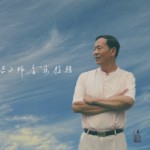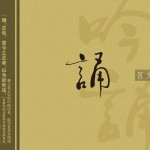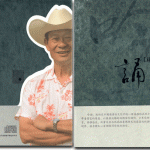Sincerely Introducing Pangu Tai Chi and Pangu Yoga
by Master Wenwei Ou [1] , July 2012
From ancient times up to today, in different areas of the world, certain people with high aspirations and determination have tried their best to create effective practices in their search for true health, happiness, fitness, and longevity. Two excellent examples of this are Tai Chi Chuan (taiji quan), created by the ancient Chinese, and Yoga, created in ancient India.
The most important feature of Tai Chi is its “softness”—cultivating softness in a way that also includes hardness and applying softness to overcome hardness. If practiced properly, it will enable a practitioner’s heart and soul to enter a tranquil, firm and indomitable, and humble state; at the same time it can adjust and assemble one’s inner forces, leading to the truly amazing phenomenon of “four ounces overcoming a thousand pounds.”
The most important feature of Yoga is its “gracefulness”—applying graceful motions to mold a graceful form. If practiced with a calm heart and dedicated mind, it can lead to a tranquil and peaceful state, enabling the practitioner’s body to make the adjustments necessary to achieve gracefulness, fitness, and suppleness.
Because of the advantages of these two practices, they are widely known and generally accepted by many people. The shortcoming, however, of both of them is that they do not allow practitioners efficiently to receive all the kinds of beneficial energies that are available from the universe.
After undergoing sixteen years of unique and mystical tempering and training, in 1990 under the guidance of Pangu I created Pangu Shengong [2] (Pan Gu Mystical Qigong). Its most important purpose is to allow people to cultivate in an ongoing way a heart of kindness and tolerance, a heart broad enough to absorb constantly Pangu’s message of love and benevolence as well as the beneficial energies emanating from him and the universe, thereby enabling the continuous adjustment and enhancement of a practitioner’s immunity and life force. The result for the practitioner is achieving the state of cultivating both soul and body, becoming healthy and happy, and, in the end, walking on the path leading to immortality. (Please see the detailed information in my books The Path of Life and Pan Gu Mystical Qigong, and all articles on the website www.pangu.org.)
Here I would like to specially introduce two excellent Pangu Shengong students as well as the practices of Pangu Tai Chi and Pangu Yoga that they developed together with me.
Vincent Chu is kind, humble, and generous. He has been practicing Pangu Shengong for eighteen years. At a very young age he began to follow his father in the practice of Yang Family Style Tai Chi Chuan. Over the years he has gone back to China many times to visit and learn from other advanced Tai Chi Chuan masters. In addition, while still quite young, he assisted his father in creating the renowned Gin Soon Tai Chi Chuan Club in Boston and is now a highly respected teacher of Yang Family Style Tai Chi Chuan in his own right. His students are spread over many countries in America and Europe.
In order to allow his Tai Chi students to achieve better results from their practice—to increase the benefits they receive without their having to pay excessive additional fees—in 2007 he expressed his wish to me to improve and to enhance the efficacy of the Tai Chi Chuan he taught. Moved by his kindness and sincerity, I taught him how to infuse some elements of Pangu Shengong into his Tai Chi Chuan, so that it would retain the advantages of Tai Chi on the one hand, and, on the other, enable the practitioner to absorb Pangu’s message of love and kindness as well as beneficial energies from him and from the universe. Therefore, this new form of Tai Chi Chuan, named Returning Tai Chi Chuan by Vincent Chu, can also be called Pangu Tai Chi.
Anisha Desai is kind, intelligent, and considerate. She has been practicing Pangu Shengong for nine years and is an acupuncturist and Yoga teacher. In order to preserve the advantages of the Yoga she teaches and at the same time to reduce the negative impact that some highly difficult movements have on certain muscles and bones, and to allow practitioners to absorb Pangu’s message of kindness and benevolence as well as the love and beneficial energies available from him and the universe, thereby enabling her Yoga students to achieve enhanced results—compared to other Yoga styles—in October, 2011, she asked for my help. I sympathized with her kind intentions, and after discussing with her meticulously how to improve some movements and intentions, I agreed to infuse some elements of Pangu Shengong into the Yoga she teaches. The result is to let practitioners of this Yoga become more able to absorb love and energy from Pangu and the universe and thus approach perfection. Therefore, it is called Pangu Yoga.
Pangu Shengong, Pangu Tai Chi, and Pangu Yoga are three different practices with different features. They do not replace each other; however, they can facilitate, foster, and enhance each other. In other words, each shines more brilliantly in the other’s company. If one can practice all three of them, the result will be even greater. I would suggest that those who have the interest and time give it a try.
In this world, methods for cultivating one’s soul and maintaining one’s well-being are numerous; I respect everyone’s choices. I, however, would like to use my successful experience of not getting sick and not worrying about being attacked by toxins for over thirty years to provide to people these recommendations to benefit the health of both body and soul.
—————————————————————————————–
Notes:
1. Pangu can also be transliterated as Pan Gu. Both spellings, “Pangu” and “Pan Gu,” are commonly used. In the past we have employed both, but in order to be consistent and to be in accord with the most up-to-date Chinese-English usage, we will use “Pangu” from now on.
Likewise, Master Ou’s full name can be written as “Wenwei Ou,” “Wen Wei Ou,” “Ou Wen Wei,” or “Ou Wenwei.” In the past all of them have been used, but in order to be consistent we will use “Wenwei Ou” from now on.
2. Pangu Shengong can also be written as “Pan Gu Shengong” or “Pan Gu Shen Gong.” In order to be consistent, we will use “Pangu Shengong” from now on.




 Mr. Xue
Mr. Xue




 Paul Fraser
Paul Fraser